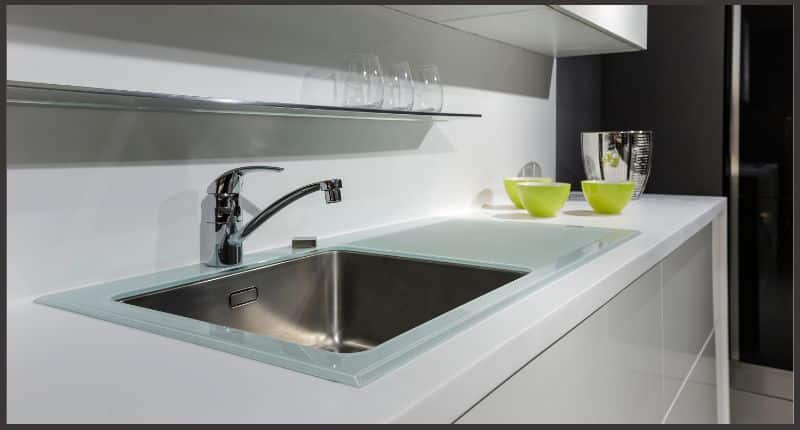Introduction:
When it comes to kitchen essentials, knives are undoubtedly at the top of the list. These versatile tools not only make food preparation easier but also ensure that precision and efficiency are maintained in the culinary process. However, with a plethora of knife options available, it can be overwhelming to determine which ones are truly essential. In this article, we will explore the eight basic types of knives that every home cook and professional chef should have in their kitchen. From a reliable chef’s knife to a specialized bread knife, understanding the purpose and unique features of each knife will undoubtedly elevate your culinary journey to new heights.
Table of Contents
What Are 8 Basic Types of Knives: From the Kitchen to the Great Outdoors
Knives are an essential tool that has been used by humans for thousands of years. From the kitchen to the great outdoors, knives serve a variety of purposes and come in many shapes and sizes. In this article, we will explore the 8 basic types of knives, their unique features, and their specific uses. Whether you’re a culinary enthusiast or an outdoor adventurer, understanding these different types of knives will greatly enhance your experience.
1. Chef’s Knife
The chef’s knife is a versatile and indispensable tool in any kitchen. With a broad, curved blade typically ranging from 6 to 12 inches in length, this knife is designed to handle a wide range of cutting tasks. Its sharp, pointed tip is ideal for precise cutting and the curved edge allows for effortless chopping and slicing. From mincing garlic to carving meat, the chef’s knife is the workhorse of the kitchen.
Expert chef and television personality, Gordon Ramsay, recommends investing in a high-quality chef’s knife, saying A good chef’s knife is the most important tool in the kitchen. It’s like an extension of your hand. When choosing a chef’s knife, look for one with a sturdy handle and a well-balanced blade for maximum control and comfort.
2. Paring Knife
The paring knife is a small knife with a narrow, straight blade that tapers to a point. Typically 3 to 4 inches in length, this knife is perfect for delicate tasks that require precision, such as peeling fruits and vegetables, deveining shrimp, and trimming small cuts of meat. The compact size and sharpness of the paring knife make it a must-have tool for any kitchen.
Chef and author, Julia Child, once stated, A paring knife is like a little gem in the kitchen. It’s so versatile and can handle all the fine details of food preparation. When selecting a paring knife, choose one with a comfortable handle that allows for precise control and a sharp blade for effortless cutting.
3. Bread Knife
Crusty loaves of bread can be a challenge to cut without squishing the soft interior. That’s where the bread knife comes in. With a long, serrated blade, usually around 8 to 10 inches, the bread knife is designed to effortlessly slice through bread without crushing it. The serrated edge grips the crust, allowing for clean and even slices.
Bread baking expert and author, Peter Reinhart, emphasizes the importance of a good bread knife, saying The right bread knife can make a world of difference in the final outcome of your loaf. It’s all about achieving those perfect slices without compromising the integrity of the bread. Look for a bread knife with a sharp, serrated blade and a comfortable handle that provides control and stability.
4. Boning Knife
The boning knife, as the name suggests, is used for separating meat from bones. This thin, flexible knife typically has a narrow, pointed blade ranging from 5 to 7 inches. Its sharpness and flexibility allow for precise maneuvering around bones and joints, making it essential for deboning poultry, fish, and other meats.
Renowned chef and restauranteur, Thomas Keller, emphasizes the importance of using the right tool for the job, saying A boning knife is crucial for properly filleting fish and removing bones from meat. With the right technique and the right knife, you can achieve perfect results every time. When choosing a boning knife, look for one with a sharp, narrow blade and a comfortable handle for optimal control.
5. Utility Knife
The utility knife is a multi-purpose knife that fills the gap between the larger chef’s knife and the smaller paring knife. With a blade typically around 4 to 7 inches, this knife is great for a wide range of tasks, such as slicing cheese, trimming vegetables, and cutting sandwiches. Its versatility and maneuverability make it a go-to knife in any kitchen.
Chef and television personality, Anthony Bourdain, appreciates the utility knife’s versatility, stating Sometimes, all you need is a sharp utility knife to get the job done. It’s the Swiss Army knife of the kitchen, capable of handling a multitude of tasks. Look for a utility knife with a sharp, durable blade and a comfortable handle for prolonged use.
6. Santoku Knife
The Santoku knife, with its origins in Japan, has gained popularity in kitchens around the world. With a blade typically around 5 to 7 inches, this knife combines the versatility of a chef’s knife with the precision of a cleaver. The Santoku is known for its flat cutting edge and the shallow depressions on the blade known as Granton or Hollows, which prevent food from sticking to the knife.
Chef and author of Japanese Kitchen Knives, Hiromitsu Nozaki, explains the significance of the Santoku knife, saying The Santoku knife is the go-to knife for many professional chefs in Japan. Its precise and efficient cutting ability makes it an indispensable tool in the kitchen. Look for a Santoku knife with a sharp blade and a comfortable handle that allows for easy control and precision.
7. Fillet Knife
The fillet knife is a long, slender knife with a narrow, flexible blade. Typically around 6 to 11 inches, this knife is primarily used for filleting fish but can also be used for boning poultry and other meats. The flexibility of the blade allows for clean and precise cuts, especially when dealing with delicate fish fillets.
Angler and chef, Andrew Zimmern, understands the importance of a good fillet knife, stating When you’re dealing with fresh-caught fish, you want a sharp fillet knife that can glide through the flesh effortlessly. It’s all about preserving the natural flavors of the fish. When choosing a fillet knife, look for one with a thin, flexible blade and a comfortable handle that provides control and precision.
8. Folding Knife
The folding knife, also known as a pocket knife, is a versatile tool that can be easily carried in your pocket or backpack. With a folding design, the blade can be safely folded into the handle, making it compact and convenient. Folding knives come in a variety of blade styles and sizes, making them useful for everyday tasks, camping, survival situations, and more.
Outdoor enthusiast and survival expert, Bear Grylls, emphasizes the practicality of a folding knife, saying A good folding knife is an essential tool for any adventurer. Whether you’re starting a campfire or preparing food on the trail, a folding knife is always there when you need it. Look for a folding knife with a sharp blade, a sturdy frame, and a locking mechanism for safety.
The Art of Knife Care
Now that we’ve explored the various types of knives, it’s important to note that proper care and maintenance are essential for prolonging their lifespan and ensuring optimal performance. Here are some tips to keep your knives in top shape:
- Always hand wash your knives with mild soap and warm water. Avoid using abrasive materials that can scratch the blade.
- Dry your knives immediately after washing to prevent moisture buildup, which can lead to rust.
- Store your knives in a knife block, on a magnetic strip, or in a sheath to protect the blade and prevent accidents.
- Regularly sharpen your knives using a sharpening stone or honing rod to maintain a sharp edge.
- Avoid cutting on hard surfaces, such as glass or marble, as it can damage the blade.
By following these simple tips, you can ensure that your knives will serve you well for years to come.
Conclusion
Knives are not just tools; they are extensions of our hands, aiding us in various tasks from food preparation to outdoor adventures. Understanding the different types of knives and their specific uses allows us to make informed decisions when selecting the right tool for the job. Whether you’re a professional chef, an avid home cook, or a nature enthusiast, having a diverse collection of knives will greatly enhance your experience and make every task that much more enjoyable.
Remember, investing in high-quality knives and taking care of them properly will not only enhance your cooking or outdoor skills but also ensure their longevity. So, sharpen your skills and keep those blades sharp – happy slicing!

Photo by Vadim Bogulov on Unsplash
Additional Guide
Internal links for the article What are 8 basic types of knives:
– Kitchen Tips for the Home: Maximize Efficiency and Master Culinary Delights: This article provides useful tips for optimizing your kitchen efficiency and enhancing your culinary skills. It complements the topic of understanding different types of knives by offering practical advice on how to utilize them effectively in your cooking endeavors.
– How to Make a Small Kitchen Look Bigger: Creating a functional and spacious kitchen is essential for any home cook. This article explores techniques and design ideas for maximizing space in small kitchens, including organizing your knives and utilizing the various types of knives to their fullest capacity.
– How Do I Start a Small Kitchen?: If you’re just beginning your culinary journey or setting up a new kitchen, this article offers insightful advice on essential kitchen tools and equipment. It covers the importance of choosing the right knives for your needs and discusses the basic types of knives beginners should consider including in their kitchen arsenal.
FAQs: What are 8 basic types of knives
What are the 8 basic types of knives?
The 8 basic types of knives are:
1. Chef’s Knife: A versatile knife with a curved blade, ideal for chopping, slicing, and dicing.
2. Santoku Knife: A Japanese knife with a shorter and wider blade, suitable for precise slicing, dicing, and mincing.
3. Paring Knife: A small knife with a pointed blade, used for peeling, trimming, and intricate tasks.
4. Bread Knife: A serrated knife with a long, serrated blade, designed for slicing bread and other baked goods without crushing them.
5. Boning Knife: A knife with a narrow, sharp blade used for removing bones from meat, poultry, and fish.
6. Utility Knife: A versatile knife with a medium-sized blade, useful for tasks that require more precision than a chef’s knife.
7. Carving Knife: A long, thin knife with a pointed tip, used for slicing roasted meats and poultry.
8. Steak Knife: A sharp, serrated knife with a pointed tip, designed specifically for cutting through cooked meat at the table.
What should I consider when buying a knife set?
When buying a knife set, there are a few factors to consider:
1. Quality: Look for knives made from high-quality materials like stainless steel, with a sturdy construction that ensures durability.
2. Purpose: Consider your cooking habits and the types of food you usually prepare. Different knife sets will include different types of knives, so choose one that suits your needs.
3. Comfort: Opt for knives with ergonomic handles that fit comfortably in your hand for a better grip and control.
4. Maintenance: Check if the knives require special care, such as hand washing or sharpening, and consider whether you are willing to put in the necessary effort.
How should I properly care for my knives?
To properly care for your knives:
1. Hand wash them: Avoid putting knives in the dishwasher, as the harsh detergents and high heat can damage the blades. Instead, wash them by hand with warm water and mild soap.
2. Dry immediately: After washing, dry the knives with a soft cloth or towel to prevent moisture from sitting on the blades, which can lead to rust.
3. Store them safely: Store knives in a knife block, on a magnetic strip, or in a knife drawer to protect the blades from damage and prevent accidents.
4. Sharpen regularly: Keep your knives sharp by using a honing steel or a knife sharpener. Regular sharpening will maintain the blade’s effectiveness and usability.
Do I need to sharpen my knives?
Yes, knives need to be sharpened regularly to maintain their cutting performance. Over time, the blade can become dull from use. Sharpening your knives helps to maintain their sharpness and effectiveness when cutting. You can use a honing steel or a knife sharpener for this purpose. It is recommended to sharpen knives every few months or as needed based on usage.



